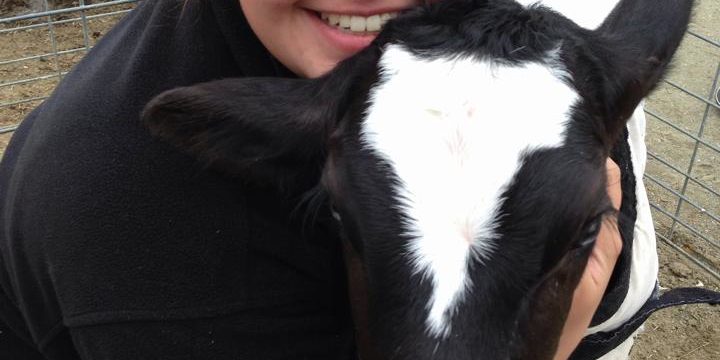As a rising senior at the University of Vermont studying Animal Science, I have made it my priority to study the health and husbandry required by all animal species. My desire to become a veterinarian has been fueled by my exposure to amazing professionals that are the hero to every single one of their patients. No dog, cat, or cow is worth anything less than everything, which is what allows me to believe that people in the animal industry are some of the most empathetic human beings. With experiences ranging from caring for the UVM dairy herd, interning at a rural animal sanctuary, and working in several veterinary clinics, it has been my goal to acquire a well-rounded knowledge of animal welfare.
It is for this reason that I take it personally when people accuse those who love animals the most of hurting them. The farmers I have had the privilege to work with are the pillars of their communities, as are my friends who have dedicated their lives to a ground-up animal sanctuary in the backwoods of Maine. Why then, do some people see it fit to take their efforts out of context and paint a picture that those involved in agriculture don’t care? In the animal agriculture industry, animal welfare is a cornerstone to an efficient and long-standing business, giving no credibility to a statement made during the 2014 Animal Rights National Conference by Gene Baur of Farm Sanctuary that farmers believe animals are “worth nothing, all they are is meat.” You know what? For the animals raised for meat, how is it in the producer’s best interest to have a stressed/battle-scarred animal with intentions of turning it into a hearty, safe food product? Ask any farmer, rancher, and other animal caretaker whom they credit most for their success and happiness: they’ll say the animals.
Misconceptions shared by animal rights activists
My goal with this blog is to address several misconceptions presented as fact at the FARM Animal Rights conference, hoping to provide a counter source for those still determining if that movement is one they believe in. From the dairy industry to veterinary medicine, these misconceptions are detrimental.
Speaking specifically to the Speciesism and Cowspiracy movie presentations featured at the conference, it was incredibly educational to be an animal “aggie” amongst animal rights activists. In both films, whenever an animal agriculture representative filled the screen, moans and remarks were inevitable, laughing if that individual were to reply to a question with “no comment.” Meanwhile, one of the scientists interviewed for Speciesism at one point admitted that he had “never seen a bull calf castrated,” but if it’s anything like piglets, it must be bad. Because that obvious display of ignorance was perfectly acceptable, it showcased the ever-present source bias throughout the conference.
With much of the work at the Alliance being the monitoring of undercover investigations and animal rights activists, these films also exemplified footage being taken out of context to promote an agenda. While speaking to the “abuses” of dairy, the screen showed cows filing out of a milking parlor with red, shiny teats; the audience gasped in sorrow, seeing it as blood. Fighting the urge to shout, “IT’S IODINE!,” I could finally understand the methodology used by animal rights activists to take an image and skew it.
Obviously, many people in attendance were not “new” to the movement, but had they been, their impression of animal agriculture would have undoubtedly been negative; I couldn’t have even blamed them. Next week, I’ll be getting technical and breaking down the more complex misconceptions presented at the conference.
All posts are the opinion of the author and do not necessarily represent the view of the Animal Ag Alliance.







